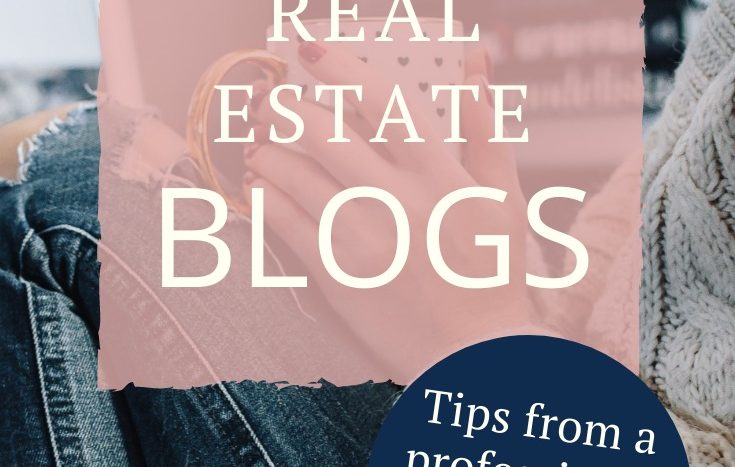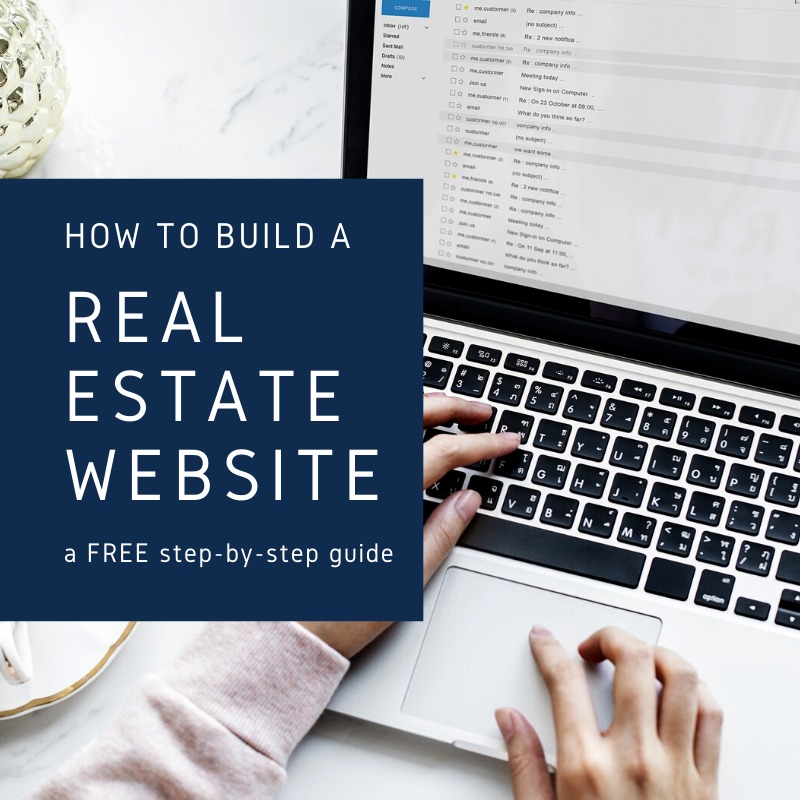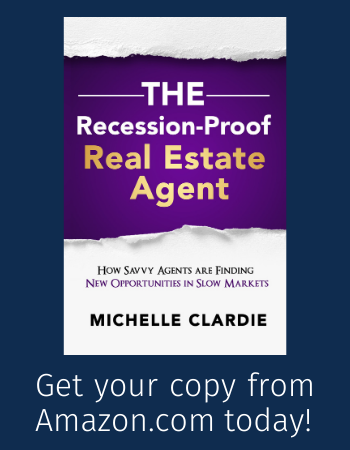Who wants some real estate blogging tips from a professional real estate blogger?! We’ve got you covered!
Meet Noelle Hartt, a professional copywriter and content marketer, specializing in real estate websites and blogs. That’s right; Noelle writes real estate content for a living. She knows what differentiates the good blogs from the bad, and the great blogs from the good. And she’s generously written this post to help the members of our Community write better blogs! Blogs to distinguish you from your competition and drive business.
Huge thanks to Noelle for The 7 Deadly Sins of Real Estate Blogs.
The 7 Deadly Sins of Real Estate Blogs – by Noelle Hartt
If you’re in the real estate business, there’s no denying that you need a blog. Let me rephrase that; you need a strong blog for your real estate business. Not a YouTube channel. Not a Snapchat account. Not a collection of semi-inappropriate photos on your business Instagram where you’re standing next to a pool in a skimpy bathing suit.
Don’t get me wrong, those things are all great (except for maybe the slightly unprofessional photos I mentioned).
When it comes to marketing yourself, a blog is without a doubt one of the best tactics you can choose. Lucky for you, it’s pretty quick and easy to get started with your blog.
But make no mistake, there’s the right way to blog and the wrong way to blog. Knowing the difference can have a significant impact on your blog, and your business’s, success.
As a freelance writer specializing in content marketing for real estate agents, I’ve seen my fair share of real estate blogs. What I’m about to say might shock you: most of the real estate blogs I see are doing more harm than good.
You’re probably wondering, “How can that be? You just said I need a real estate blog.”
I did, and you do. But not all real estate blogs are created equal.
You need a real estate blog that’s informative, professional, and working to promote your business; it’s not enough to just have a page on your site titled, “Blog,” that maybe has one or two articles from the last 6 months.
That being said, I wanted to call out some of the most toxic mistakes I see being made on real estate blogs, so you know what to avoid.

These are the 7 deadly sins of real estate blogs that you must avoid at all costs to risk tarnishing your brand:
1. No recent content
Before I even talk about the importance of recent content, I’d like to first mention how important it is to at least have some content. Nothing looks sillier than a blog page whose only content is a message reading, “There are no recent posts to display.” Make sure when you’re launching a blog that you’ve got some content already created before you send people on a wild goose chase.
So, back to the issues of current content. Clients ask me all the time how frequently they should update their blog. While there’s certainly no limit here, I always recommend publishing new posts at least once a week, especially if you’re taking the time to hire a freelance writer.
Think of your blog as the hub of your social media marketing. Every time you publish a new blog post, you create new content to share on social. This will inevitably increase your website traffic and help reinforce your overall brand awareness.
You don’t want to let weeks at a time go by in between sharing your blog posts; you want to make sure your audience is thinking of you as much as possible, and a great way to accomplish this (without relying on annoying ads) is by sharing helpful information in the form of original blog posts.
Aside from being able to control the flow of traffic to your site, posting regularly and consistently on your blog will inevitably attract a following, which you can use to your advantage by allowing readers to subscribe to your content. As you publish more blog posts, you’ll start to earn a reputation in your community as a reliable source of information for all things related to real estate and homeownership.
The way I see it, you’ve got all the information that your target market is looking for… So why not use that knowledge to your advantage and grow your brand with informative blog posts?
2. Cookie-cutter content
This one really makes me mad. You work hard for your money, and it kills me to see you throw it away on generic blog posts that do not help your brand.
There are several services out there who sell content packages for realtors. I won’t name any names, but please at least think about producing your own content before paying for cookie-cutter articles.
I know it’s tempting to purchase blog posts that you can throw up on your website without having to spend hours writing, but this solution to content marketing is the equivalent of fixing a leak with duct tape.
See, the basic principle of advertising is emphasizing the unique benefit your business has to offer over your competitors.
Even if you feel that you and your competitors are completely equal, your audience will not share that opinion. You can capitalize on their perceptions by creating the illusion that you have a superior service… but there’s no way you can do that if you’re sharing the same marketing materials as your competitor (because when you get down to it, that’s what your blog posts really are).
Always make sure your marketing efforts differentiate your brand, and say “no” to generic, cookie-cutter blog posts!
3. Blog posts that are really just listings
So I mentioned before that your blog is a marketing tool, and that’s true! But it doesn’t have to be as in-your-face as a typical ad.
I like to think of a real estate blog as the way you would represent yourself at a networking event (or even a party). If all you could talk about were your latest listings, people would probably get pretty tired of talking to you.
Now, I get it, you’re in the real estate business and you need to talk about your listings…but that doesn’t make your blog the place to do it. Ideally, listings and blog posts should be separate pages on your site, so readers don’t have to sort through listings to find blog posts, and vice versa.
When you use your blog correctly, it serves as a branding tool to bring more people to your website, even if they’re not quite ready to look at houses yet. Make it easy for these types of people to find the information they need. For example, if you create content that teaches first-time homeowners what they need to prepare for the buying process, they’ll more than likely be willing to call you once they’re finally ready to start looking at homes. But in order for this type of strategy to work, you must make that information easily accessible on your website.

4. Poor formatting
Remember in college when you stressed yourself out learning how to format for MLA, APA, and the occasional crazy professor with his own formatting rules? Well, blogging requires yet another format that you’ll need to get used to using.
The fact is that people (damn Millennials!) just don’t want to read long blocks of text; we’re lazy. We like articles we can skim.
It’s not enough to break up your blog posts with subheadings, although that’s important and will make your content search engine-friendly. You want to keep paragraphs short as well. A good rule of thumb is to have no more than 3 lines per paragraph, though where you’ll need to break up the text in order to achieve this style may depend on your blog’s theme and layout.
It could take some time to get used to formatting content for your blog, but once you get the hang of it, I promise you’ll see a difference.
With the right formatting and quality writing, readers are much more likely to read your whole post, leave a comment, and share the article with their friends.
5. Not using categories or tags to organize posts
Always, always, ALWAYS organize your blog posts with keyword-focused categories and tags! Not only do categories and tags make it easier for readers to look through your archives, but this is another easy way to make your site rank on Google.
If blogging is totally new to you, you may be wondering what the difference is between a category and a tag. I like to think of the category as a folder on your computer, and the tag as a subfolder.
So, for instance, you may have a category called, “Buying Houses,” which you’d apply to all articles around purchasing property. One of your subsequent tags could be, “First-Time Homeowners,” and this would be applied to all articles you publish about advice for first-time home buyers.
WordPress blog posts default to the “uncategorized” category, so my advice to anyone using a WordPress blog is to change that setting to something else. Even if it’s something as broad as “real estate,” just having a back-up category in place makes more sense than that “uncategorized” label.
There are tons of different ways you can choose to categorize and tag your posts, but taking the time to do this correctly from the beginning will help give your blog a clean, professional look that’s sure to leave a good impression on your readers.
6. Social media links that don’t work
It’s 2018, and just about every website you visit now has social media icons that should, in theory, link to a business page on each corresponding platform. You’d be surprised how often I find that these links are set up incorrectly.
I’m not sure which is worse: a Facebook icon that links to Facebook.com, or that same icon linking to a dead page. Nevertheless, they’re both pretty silly, and can quickly make your business seem unprofessional.
Whether your site has recently launched or you’ve been using the same site for years, make a habit of regularly checking your social media icons to ensure the links are working correctly. This is especially important if you’ve hired a social media manager or a web developer and there’s a possibility that someone other than yourself has made changes to your site and/ or your social pages.
My advice is to click the social media icons on your site at least once a month, just to make sure they’re working correctly and not taking people to useless pages.
7. No social share counts
Two of the best ways to measure engagement on your blog posts are the comments section and the social share counts. Some blog owners choose to turn off the comments, and I can understand why. Allowing readers to post a comment could potentially open a can of worms, especially on a high-traffic website.
Social share counts, on the other hand, offer a great way to measure your blog posts’ performance, without giving you the extra task of having to moderate or even remove comments. Better yet, since you’ll always be the first to share your blog posts on social media, your social share counts will pretty much never be 0. Your readers will be more encouraged to share your posts when they see that they aren’t the first to do so.
Now that I’ve addressed these real estate blogging sins, I hope you can use this information to your advantage! When done correctly, content marketing really is one of the best ways to build your brand, manage your reputation, and drive more business in the long run.
Of course, if you have questions about getting started with your own real estate blog, or if you’re ready to execute your content marketing strategy, please visit my website to contact me today!
Before You Go
Huge thanks again to Noelle for the transformative blogging tips!
Looking for some blogging ideas? We have a list of 100+ blog topics for Realtors. Just enter your contact info below to have the list delivered to your inbox.
And don’t forget: if you’re overwhelmed by the idea of blogging or just don’t have time to manage your own blog, you can outsource it! Noelle regularly accepts new clients. Contact her directly at noelle@noellehartt.com for more information on her service packages and pricing.











Yes, I agreed with you about those who are Not using categories or tags to organize posts. That’s the big reason for degrading real-estate sites. I have seen a lot of sites with bad content reviews because of this problem. so many peoples are discussing this topic for increasing clients on their sites. These peoples should see the top sites how they are managing contents.
Yeah, it’s one of those small things that makes a big difference. Thanks so much for your feedback!
Yup, thaks for advice. This mean i have doing wrong to my website. Pesonabandung.com is my web for real estate in bandung
Thanks for leaving a comment. And being open to the advice! It’s tough because no one tells you any of this when you start your real estate business and launch your website! We’re hoping to change that so agents can find this information and start their online presence strong.
it is essential you focus on the quality of content, not quantity. The fresh, unique, well-written content is what will drive up traffic and motivate your readers to act.
splendid projects bangalore review
Totally agree. You have to post consistently to boost your SEO, but not so often than you’re publishing pieces that don’t provide value to your audience.
Thanks for sharing the great blog. I found it very informative, Meaningful, beneficial to real estate services. keep up it.